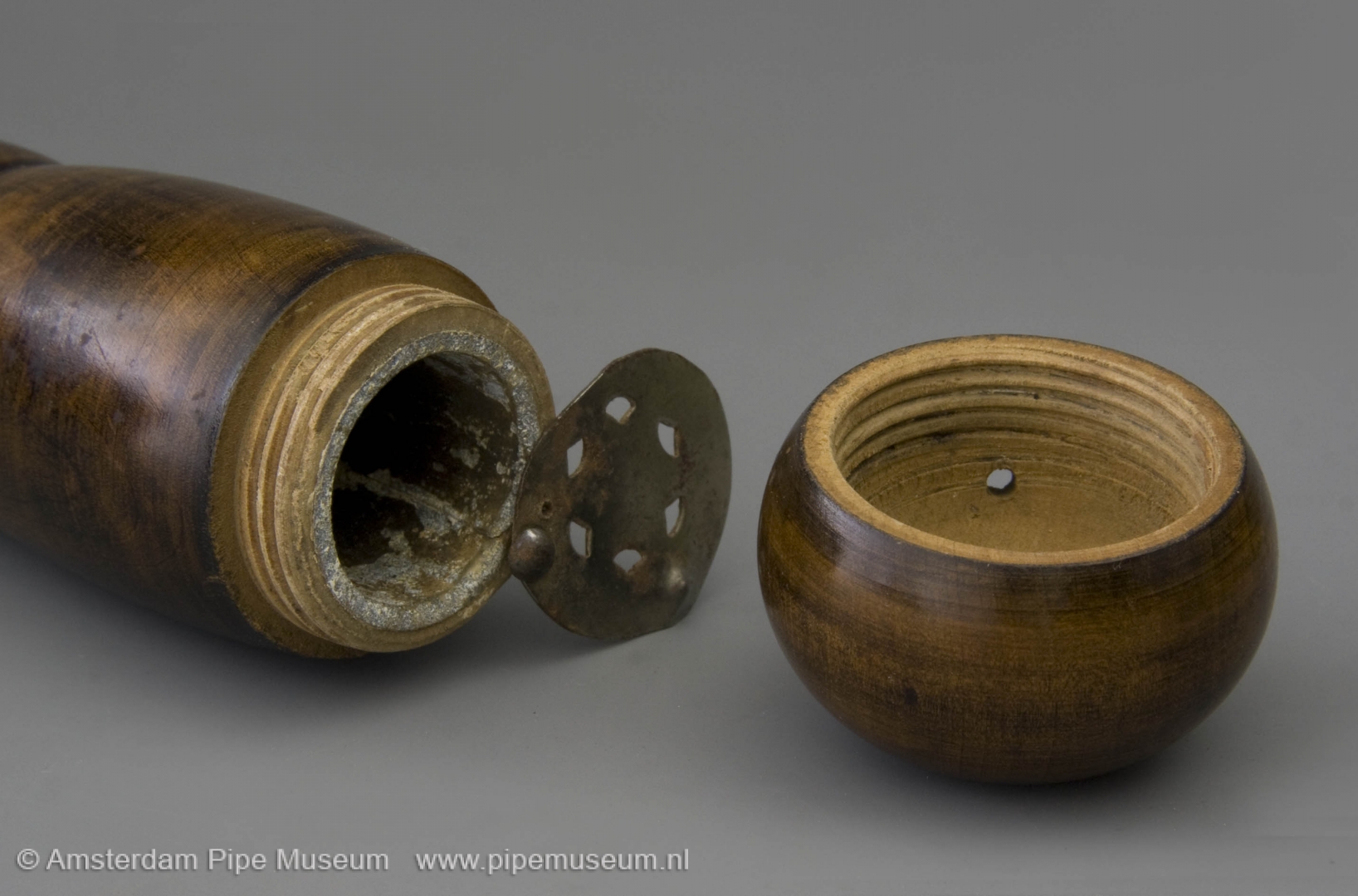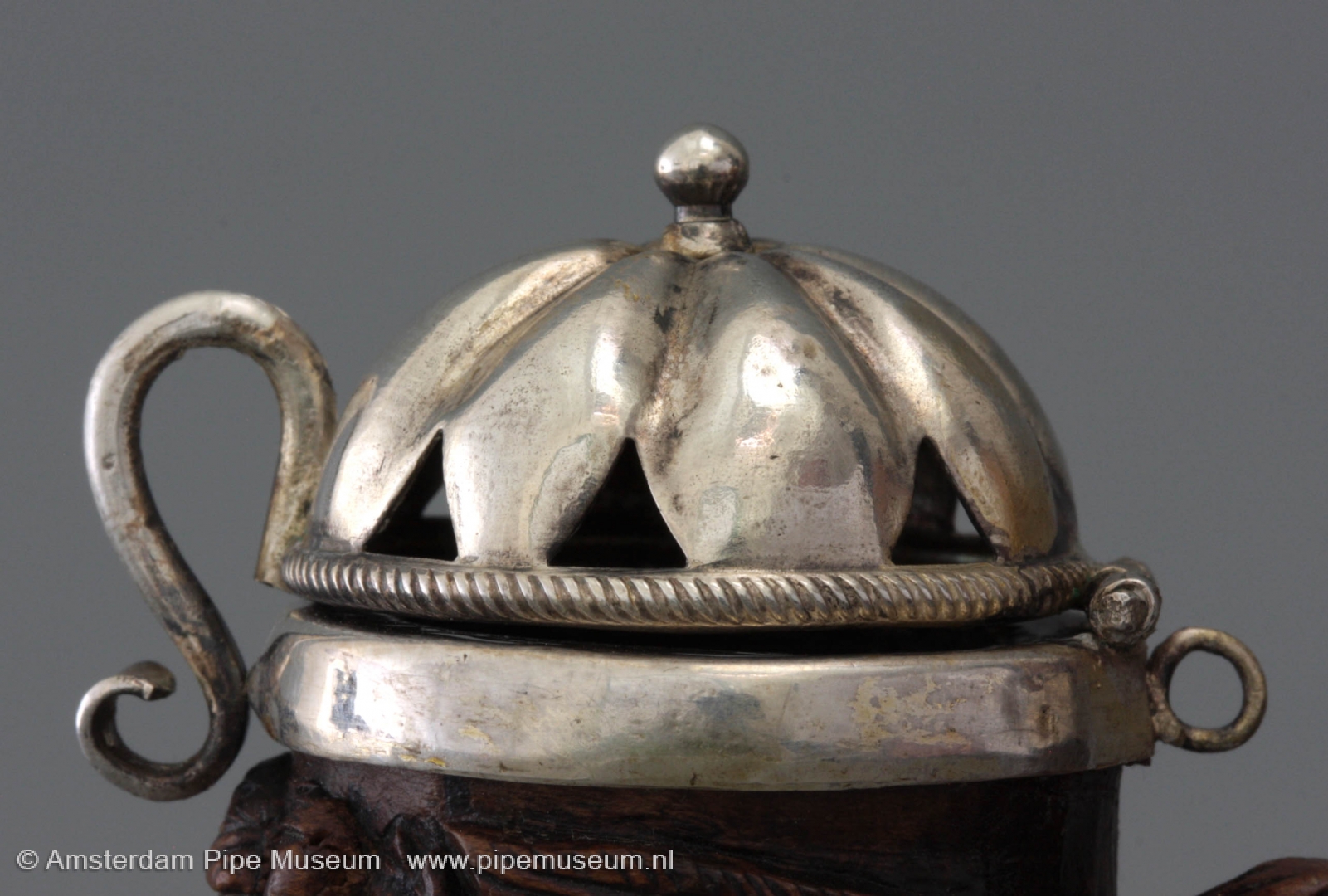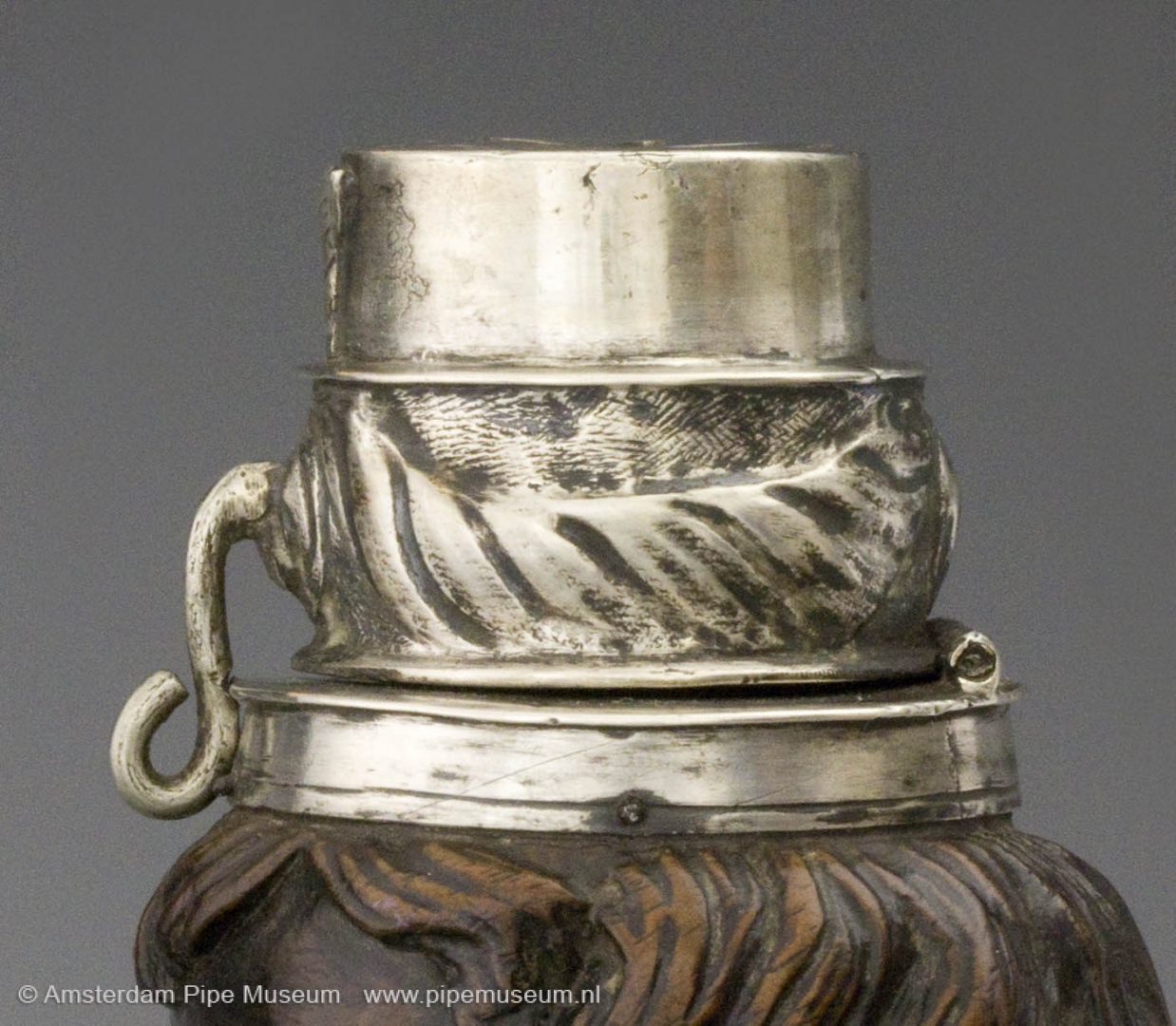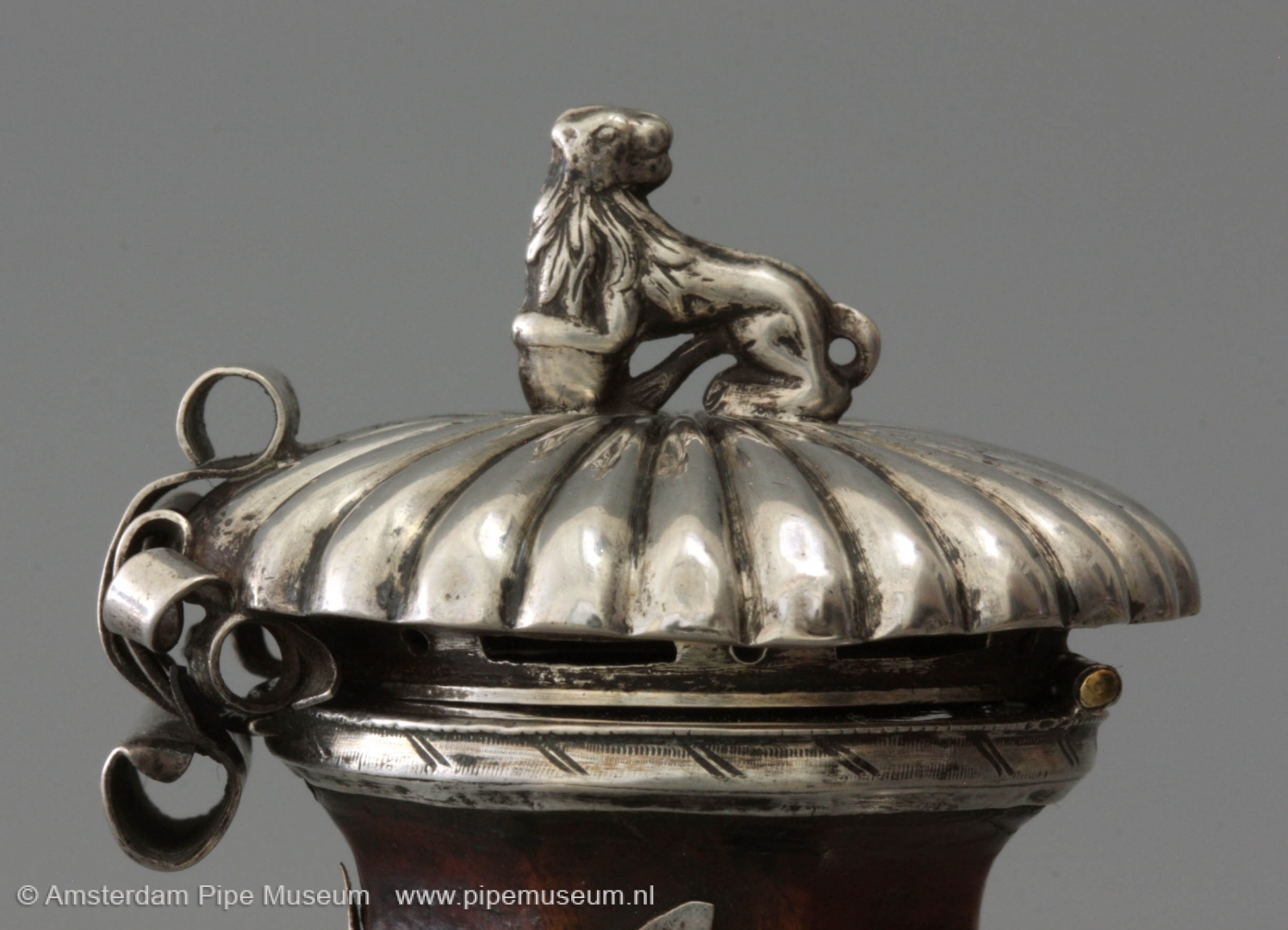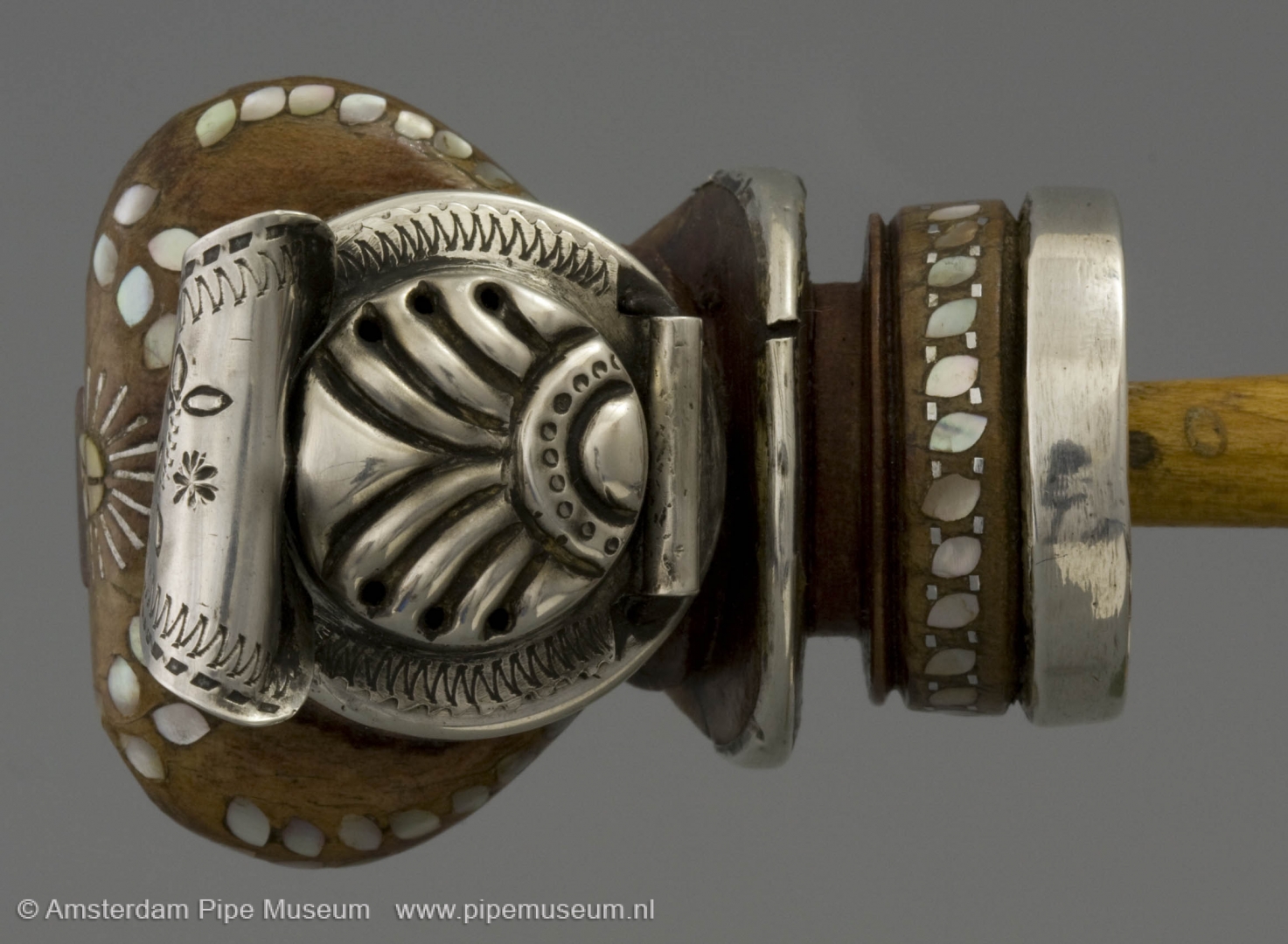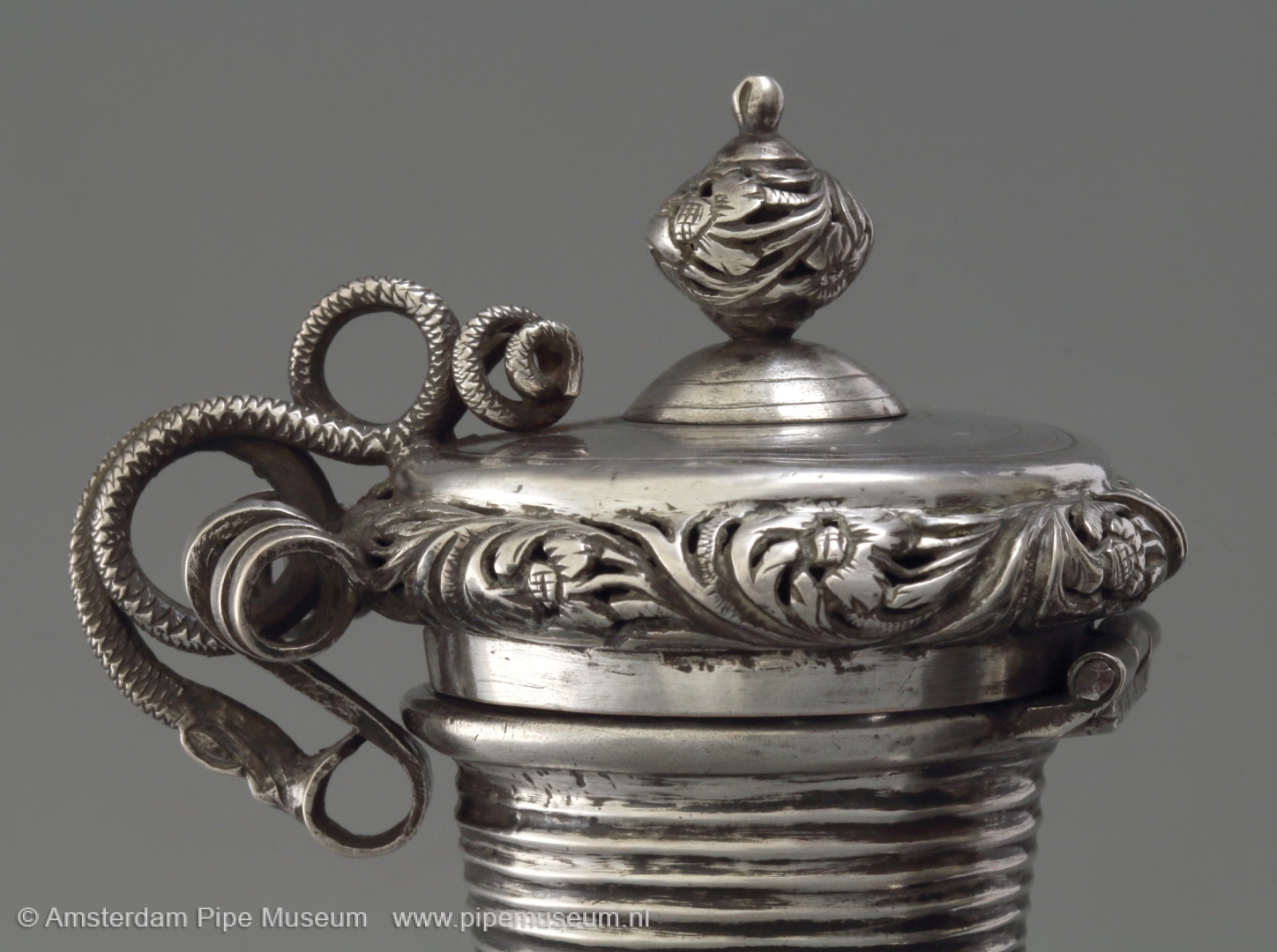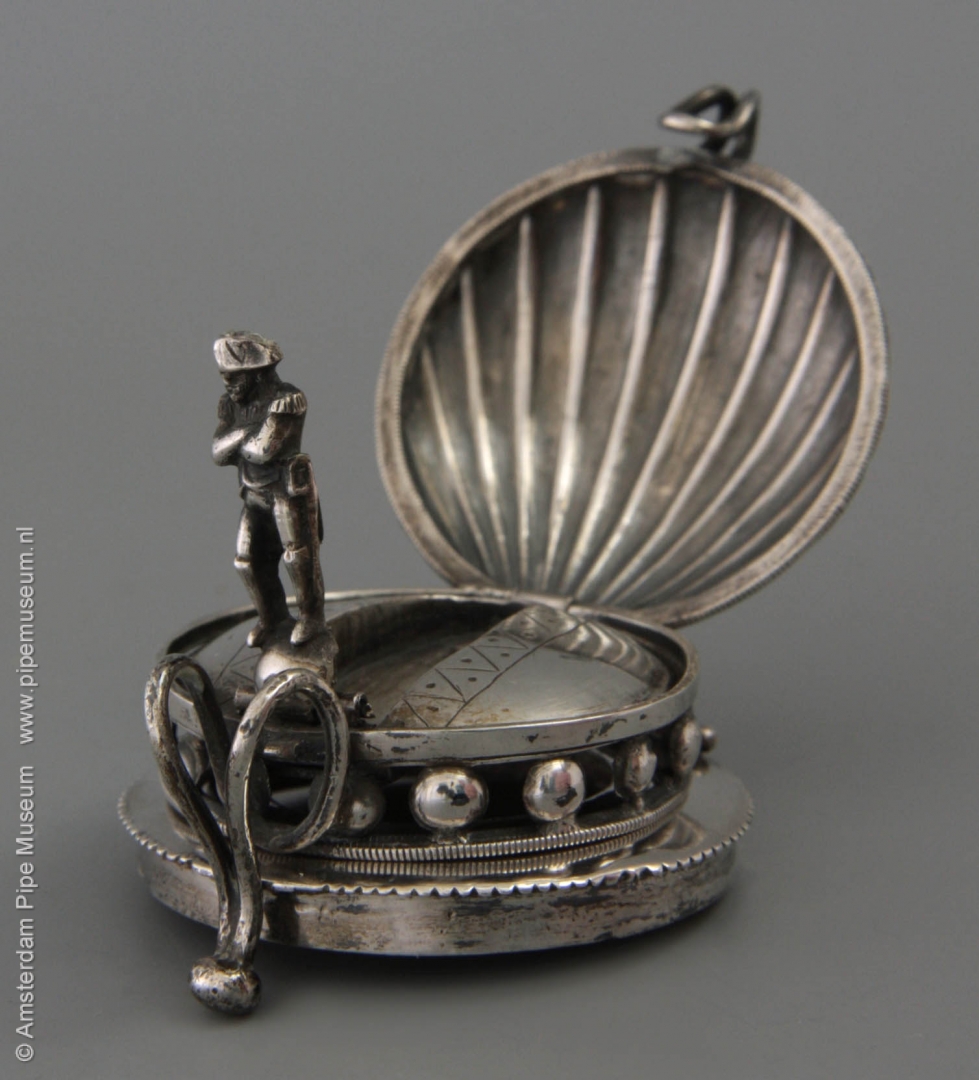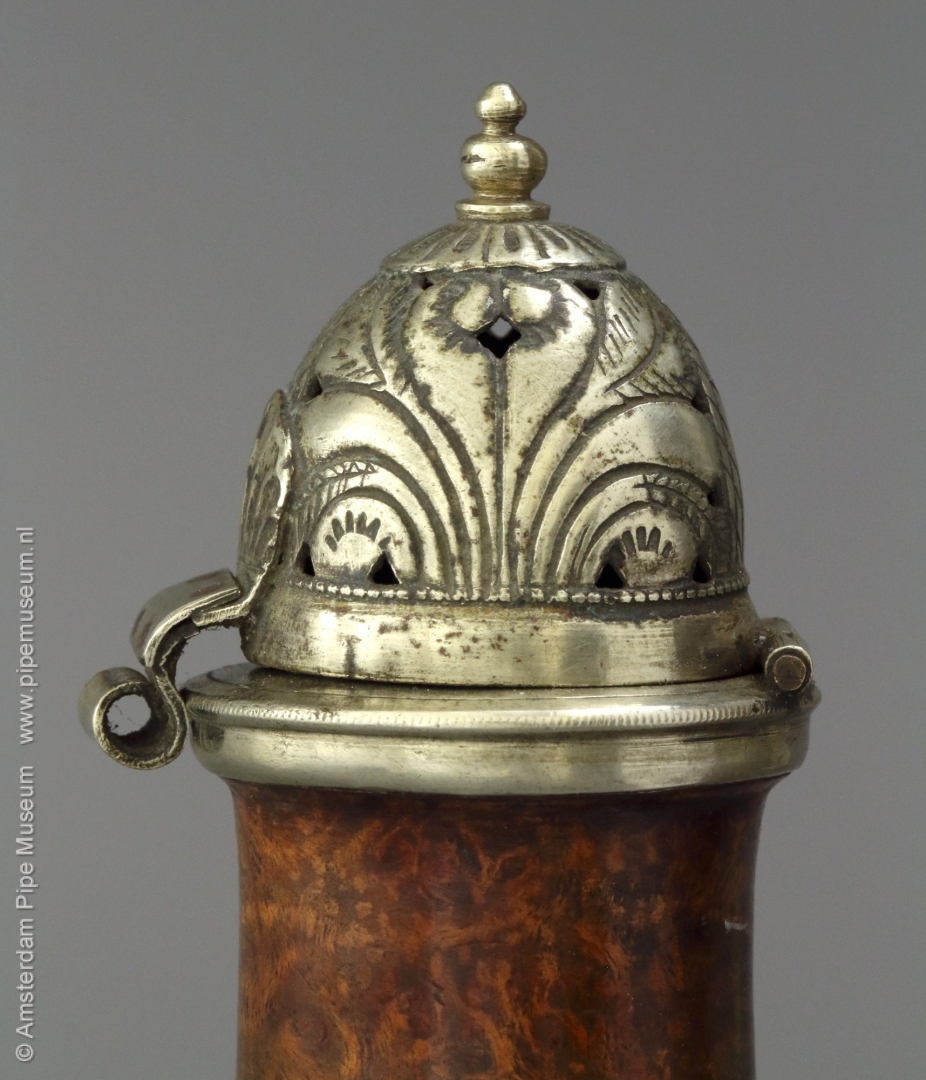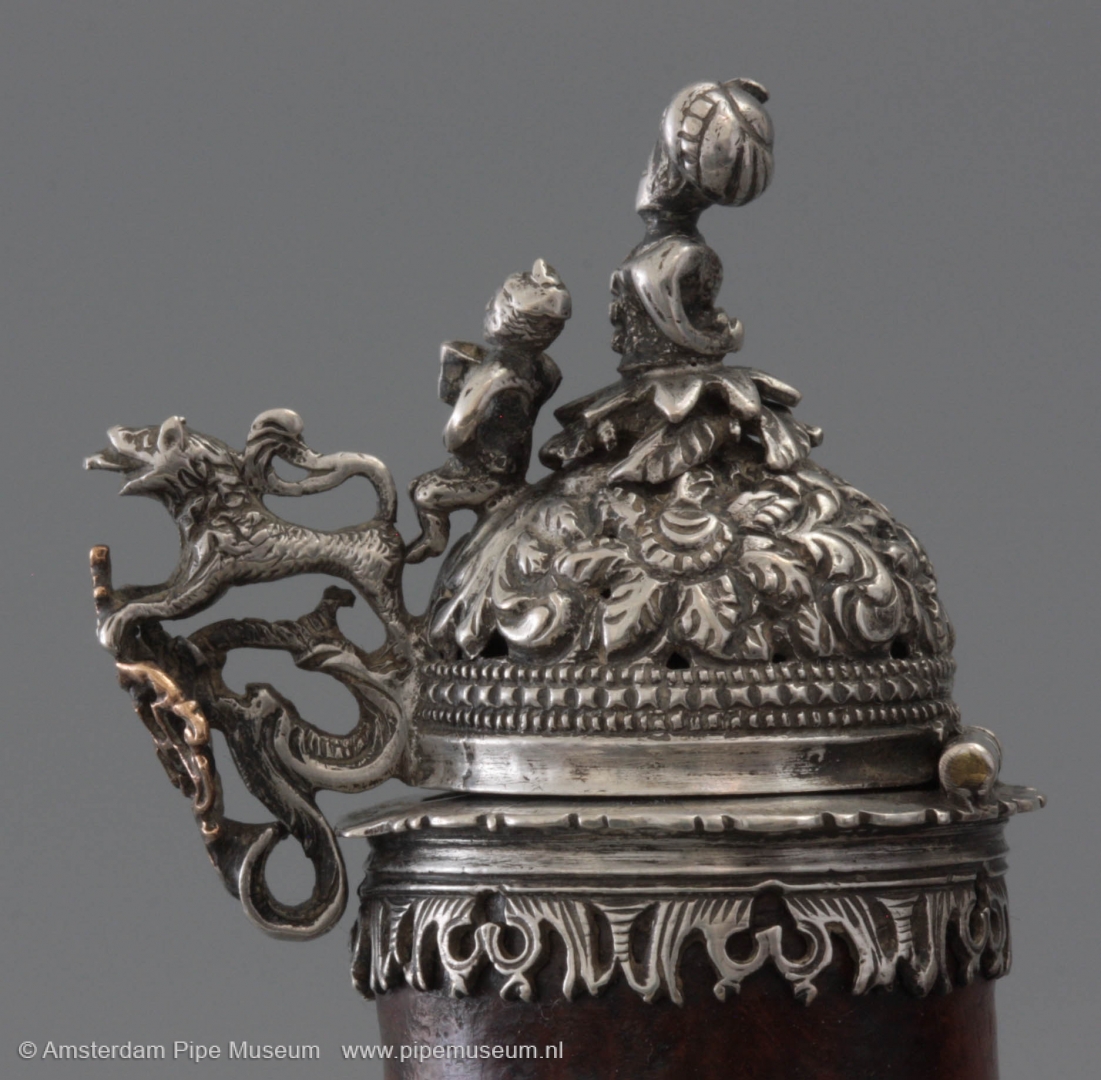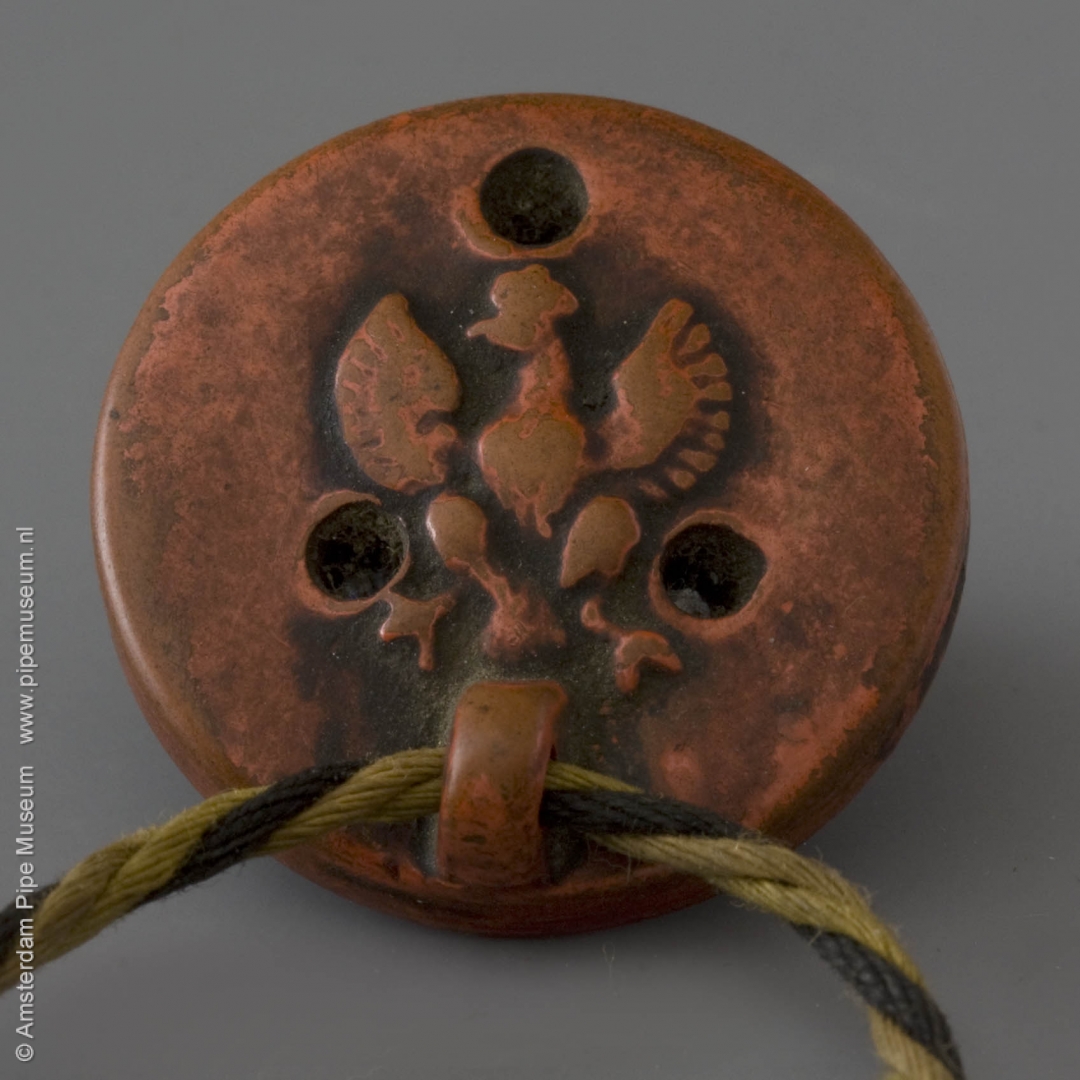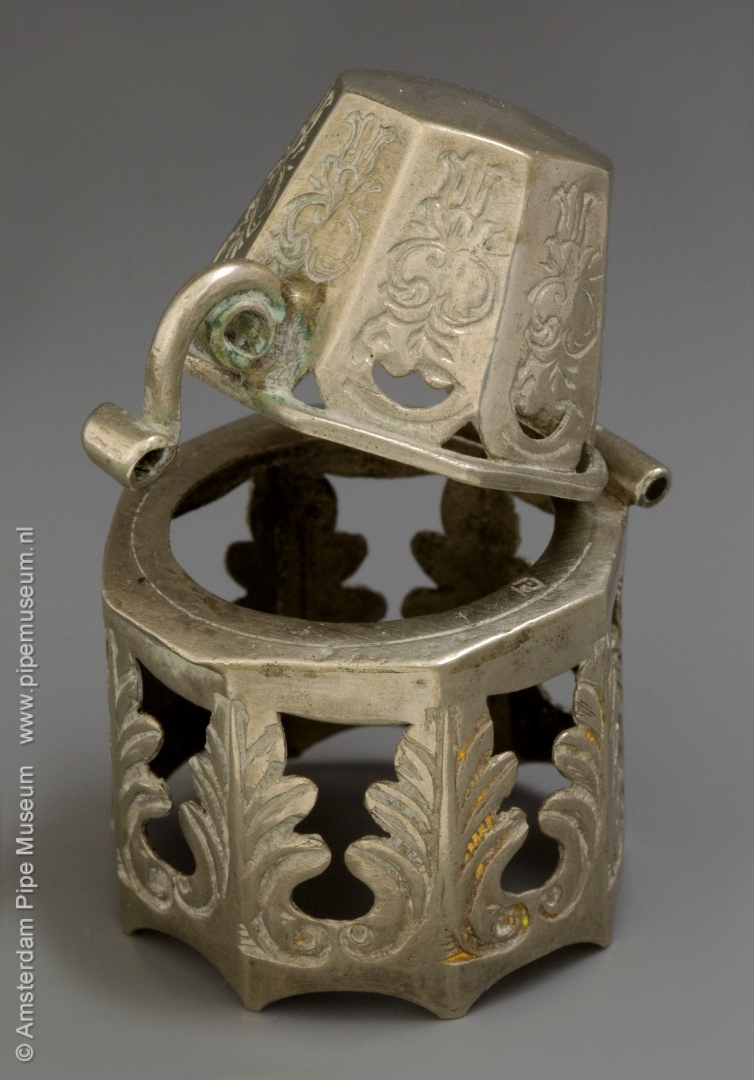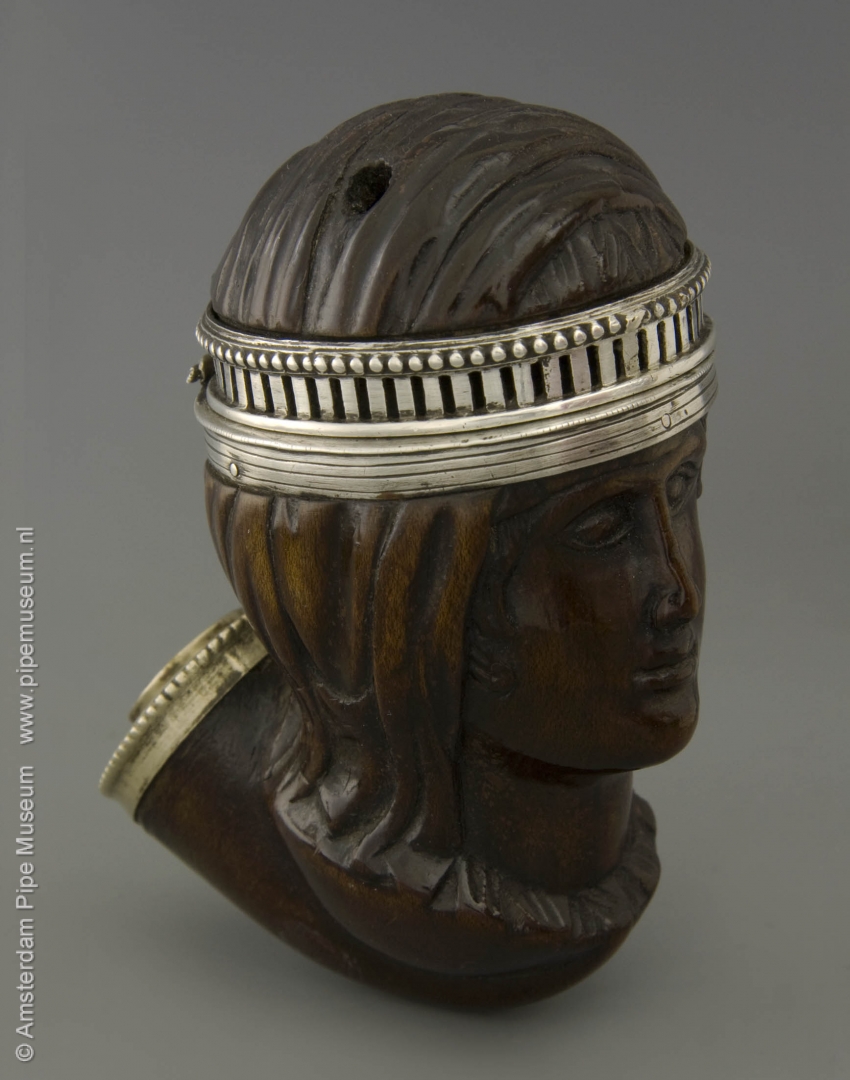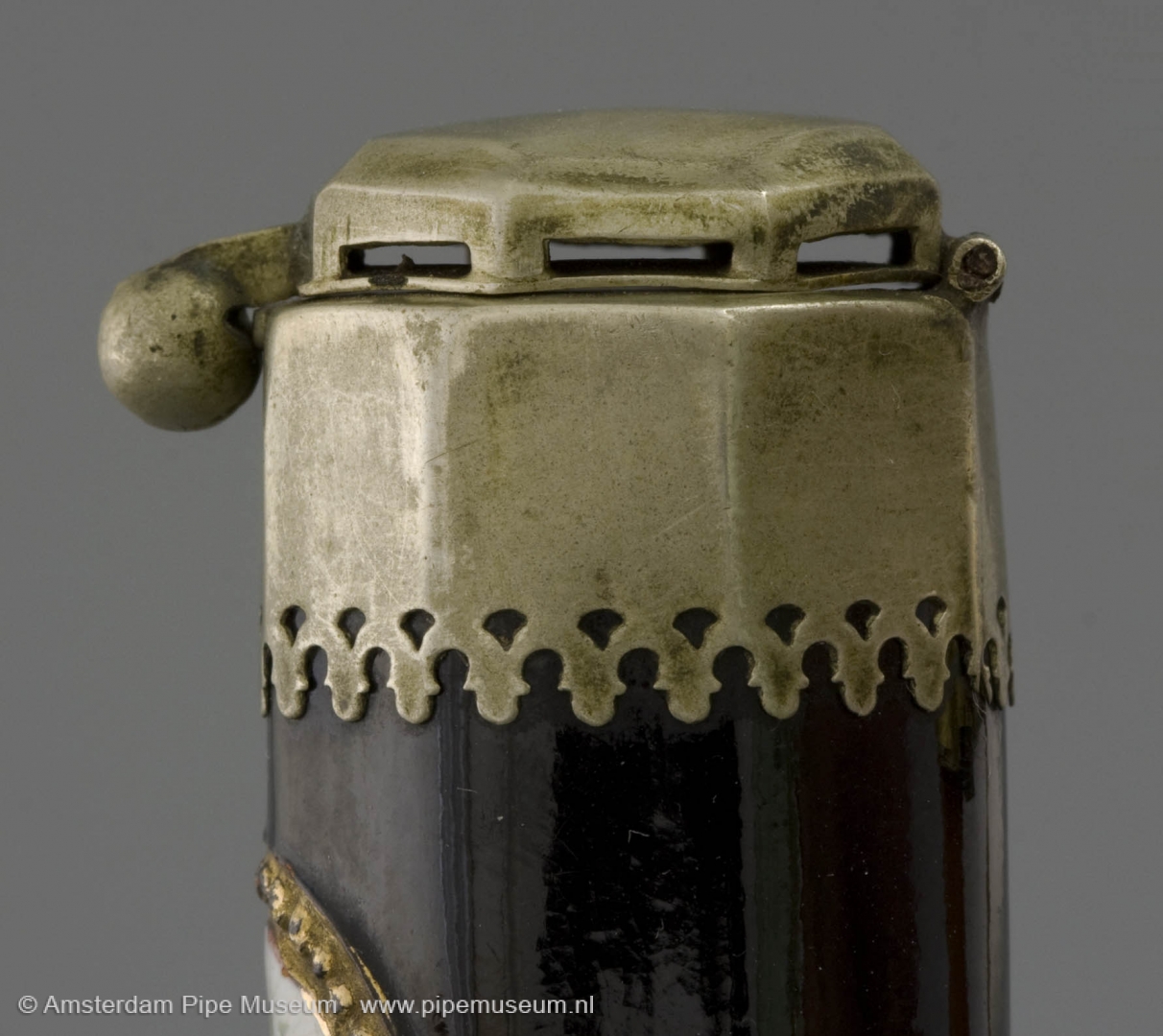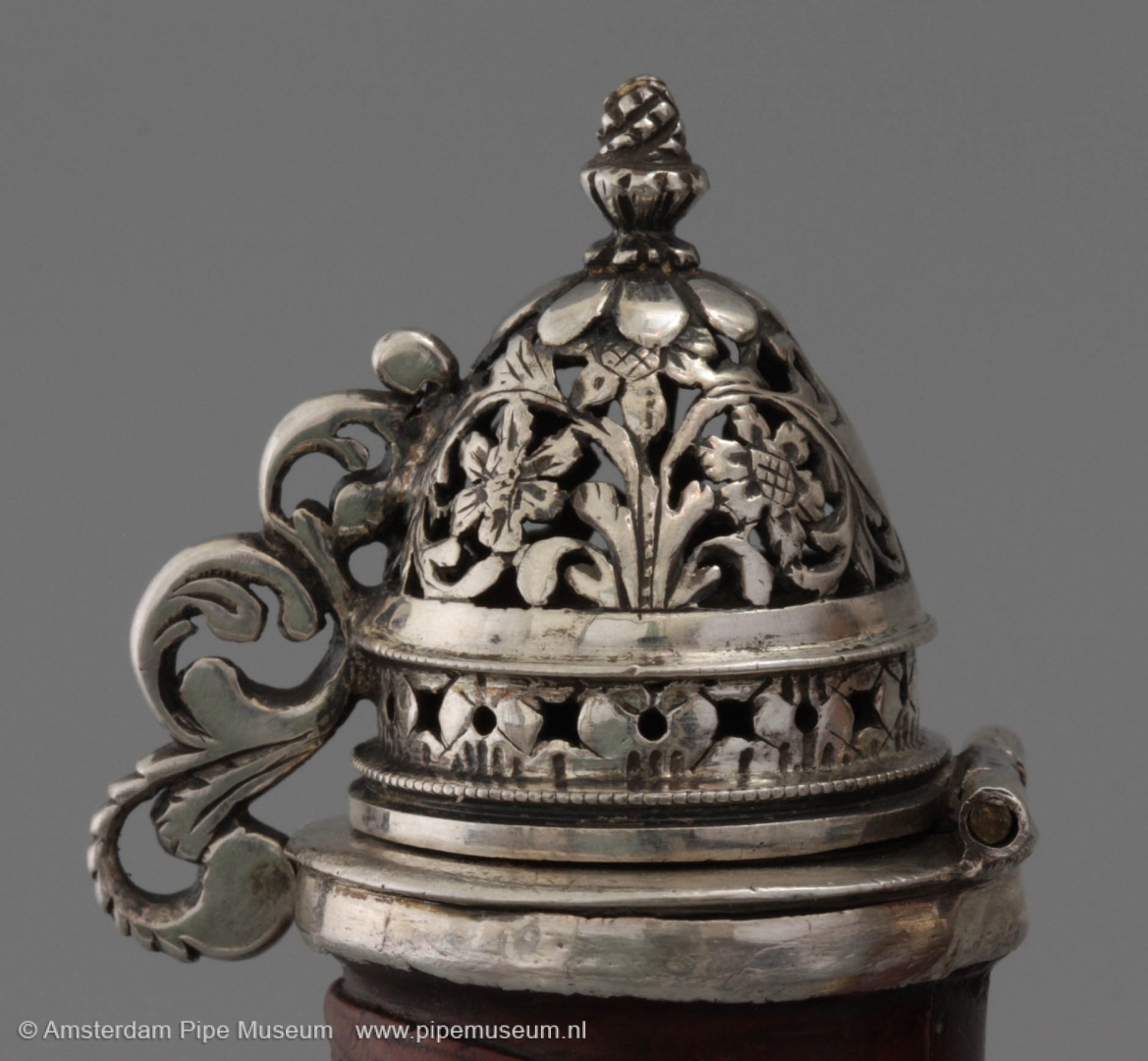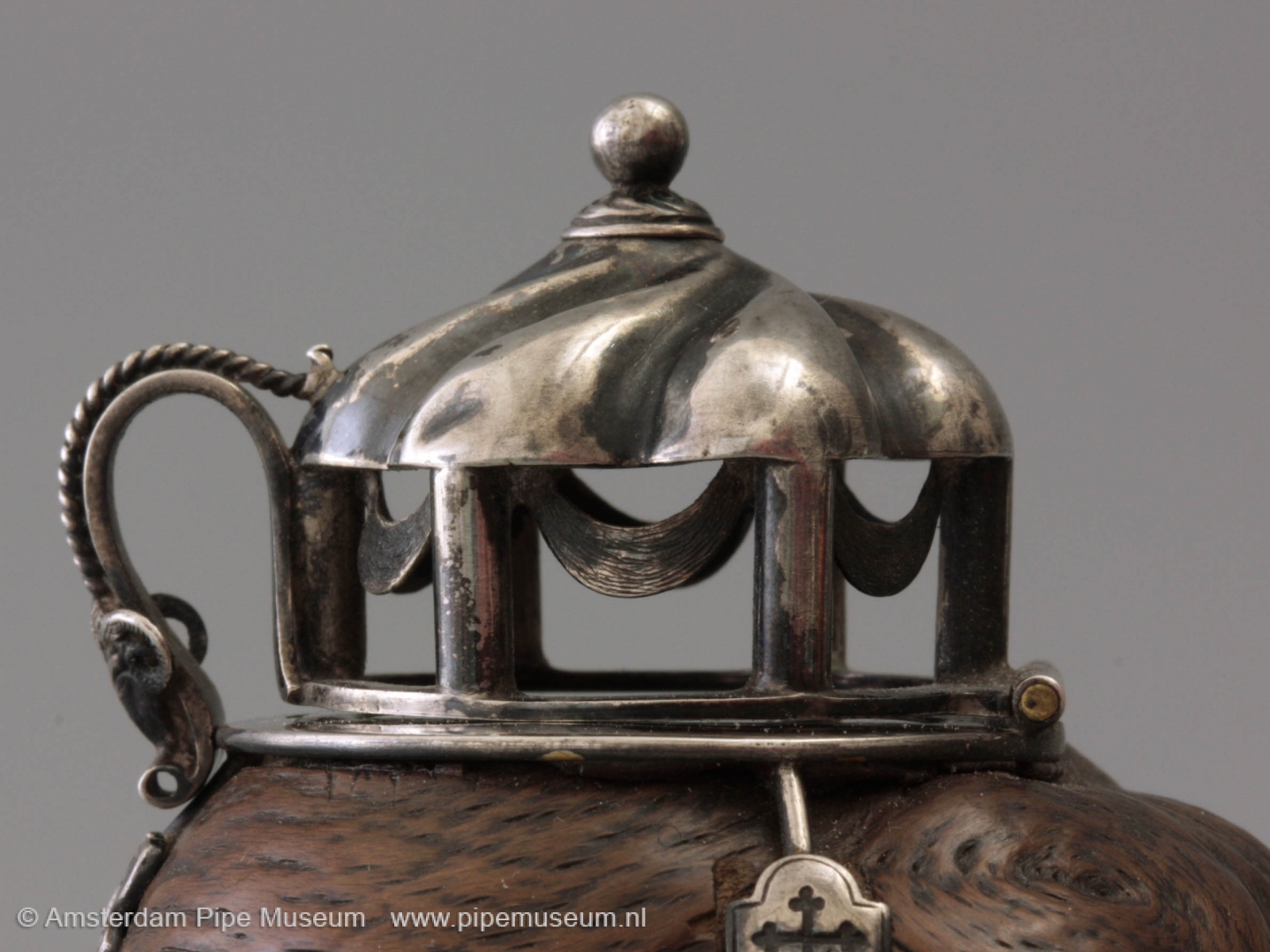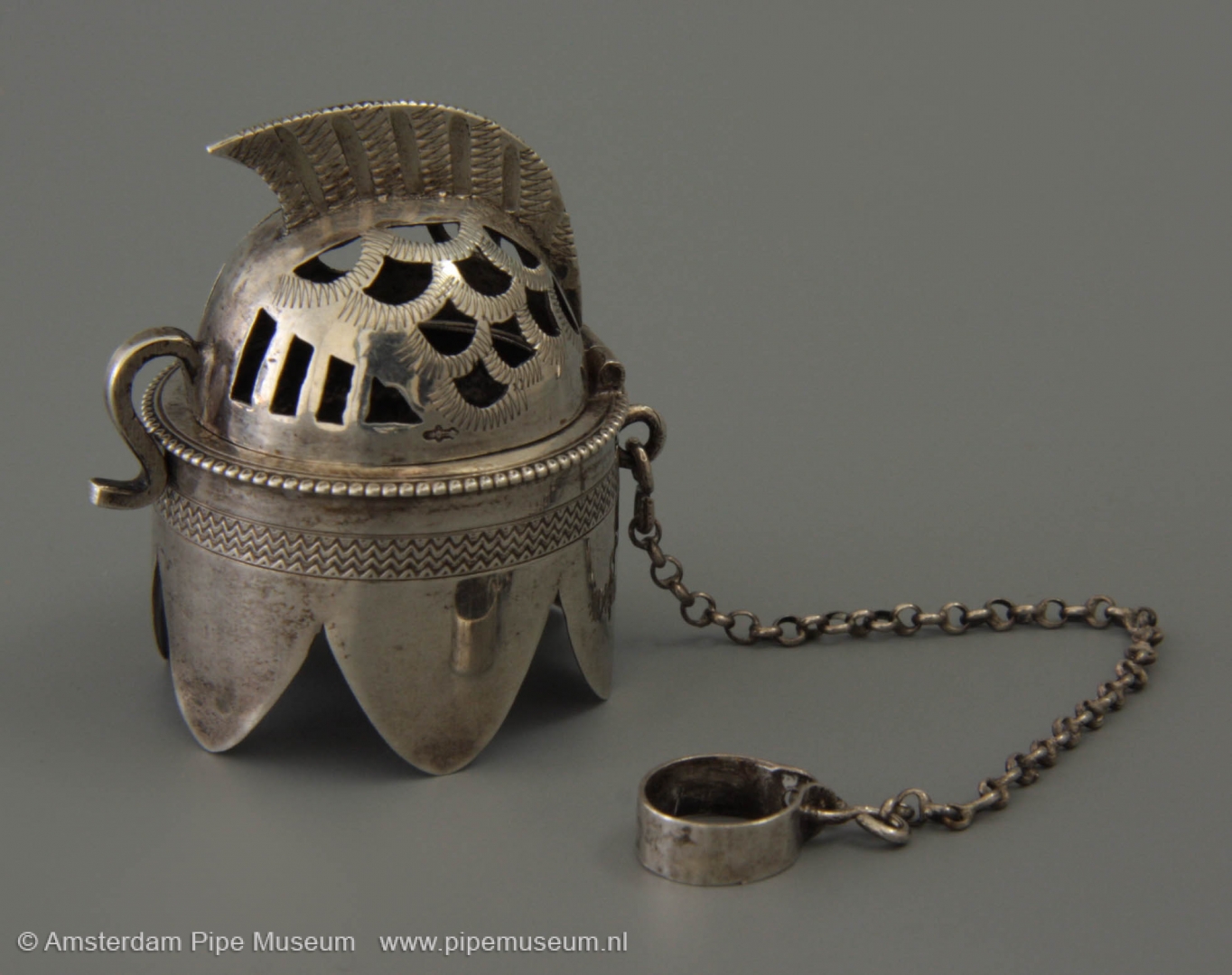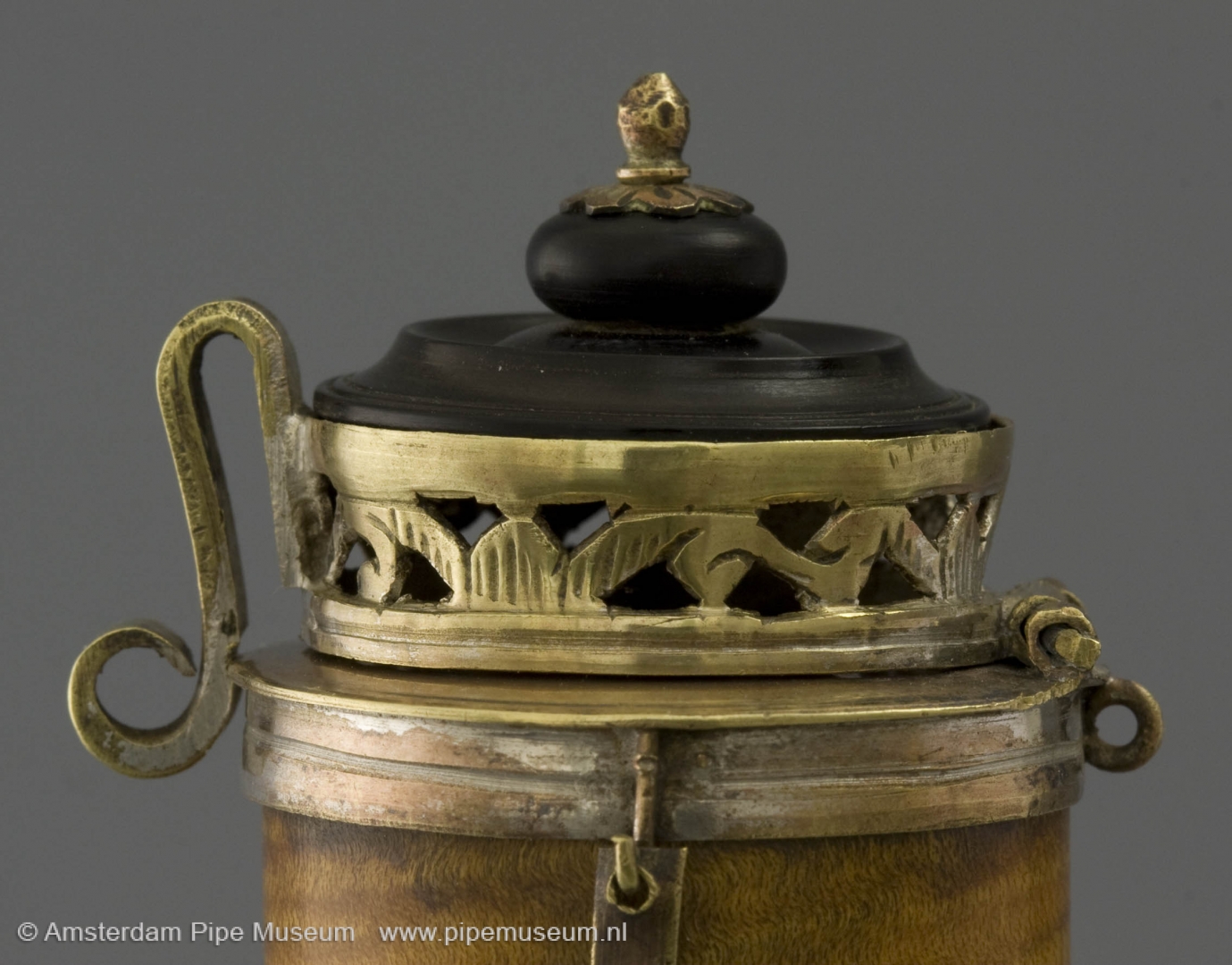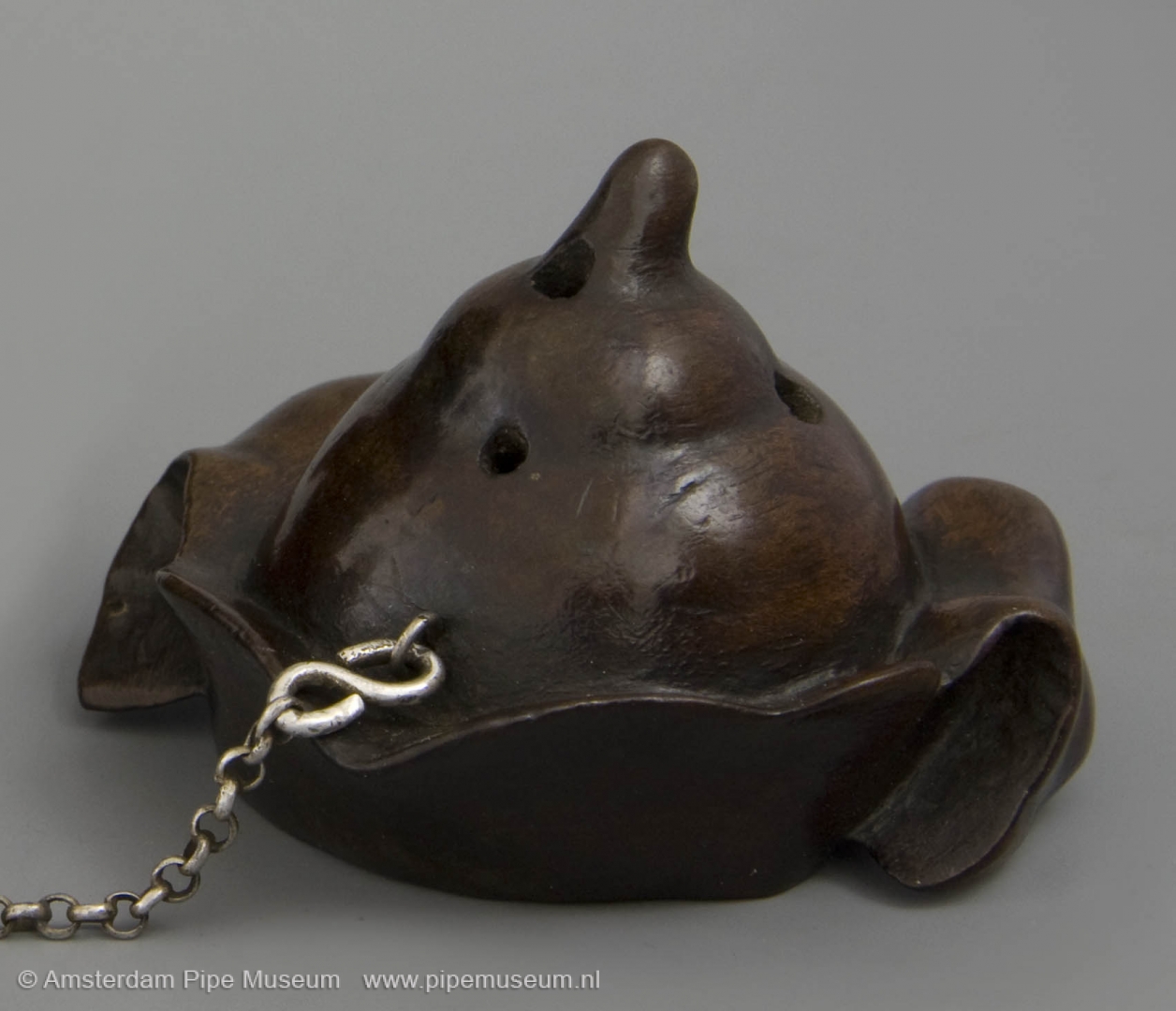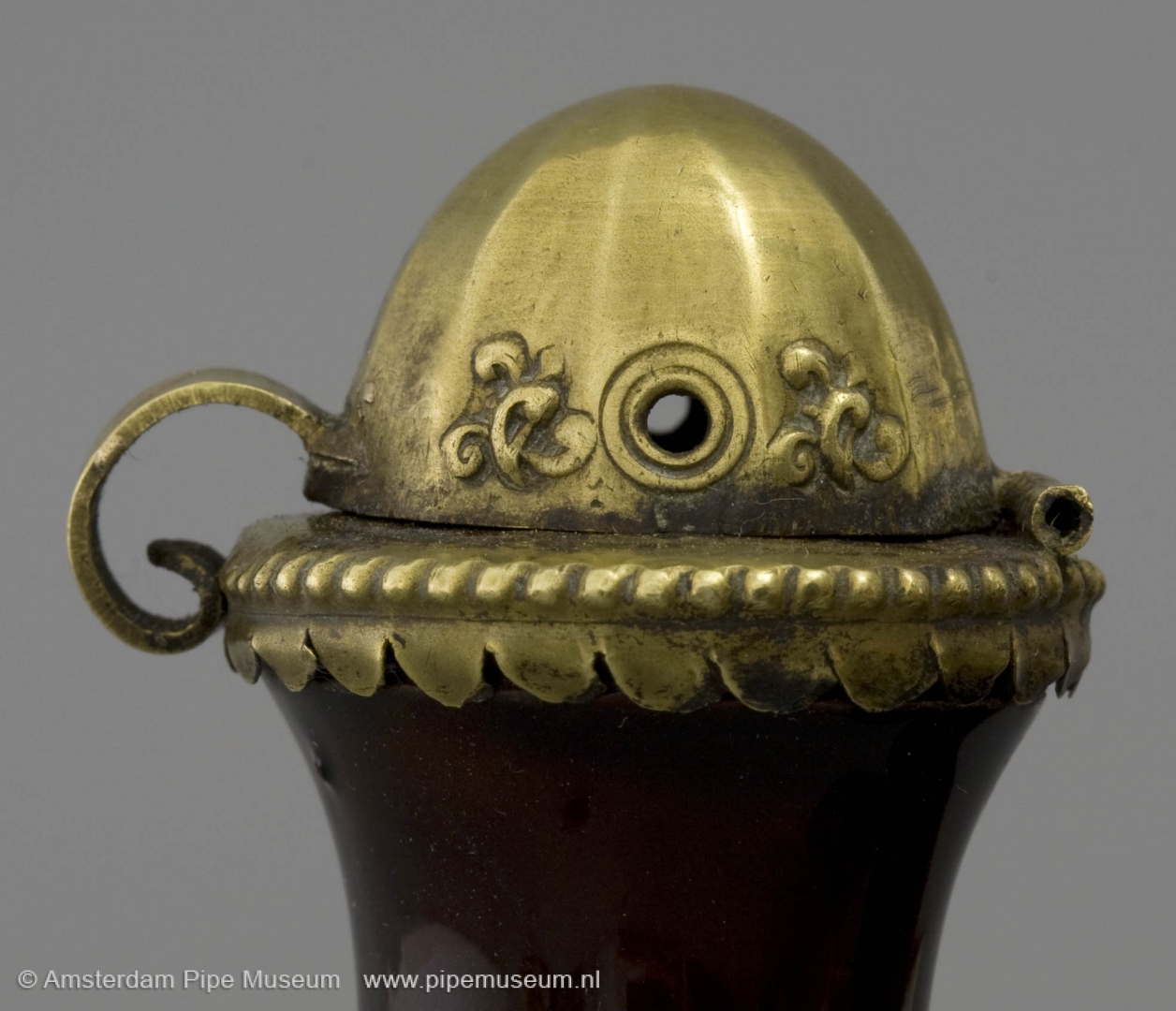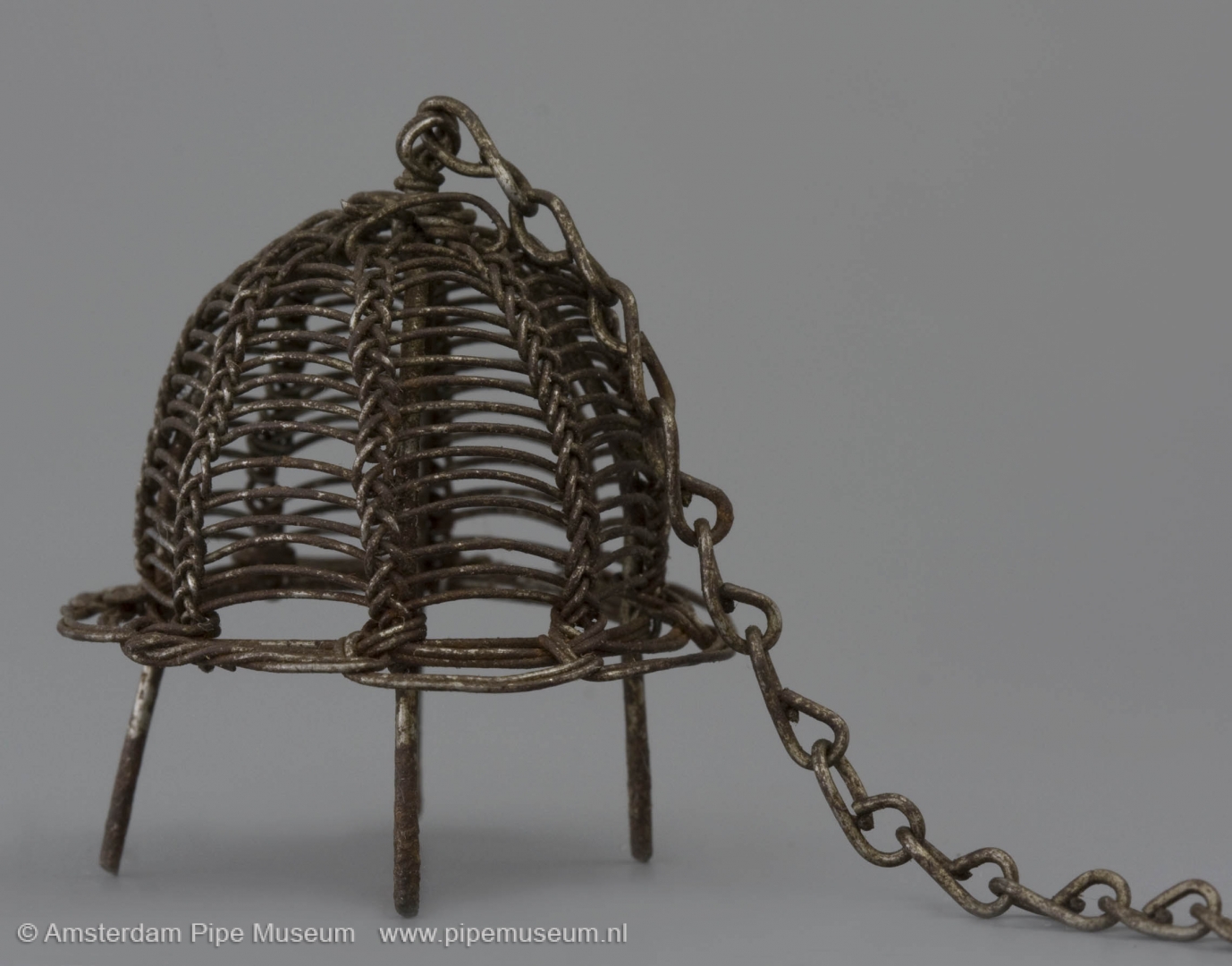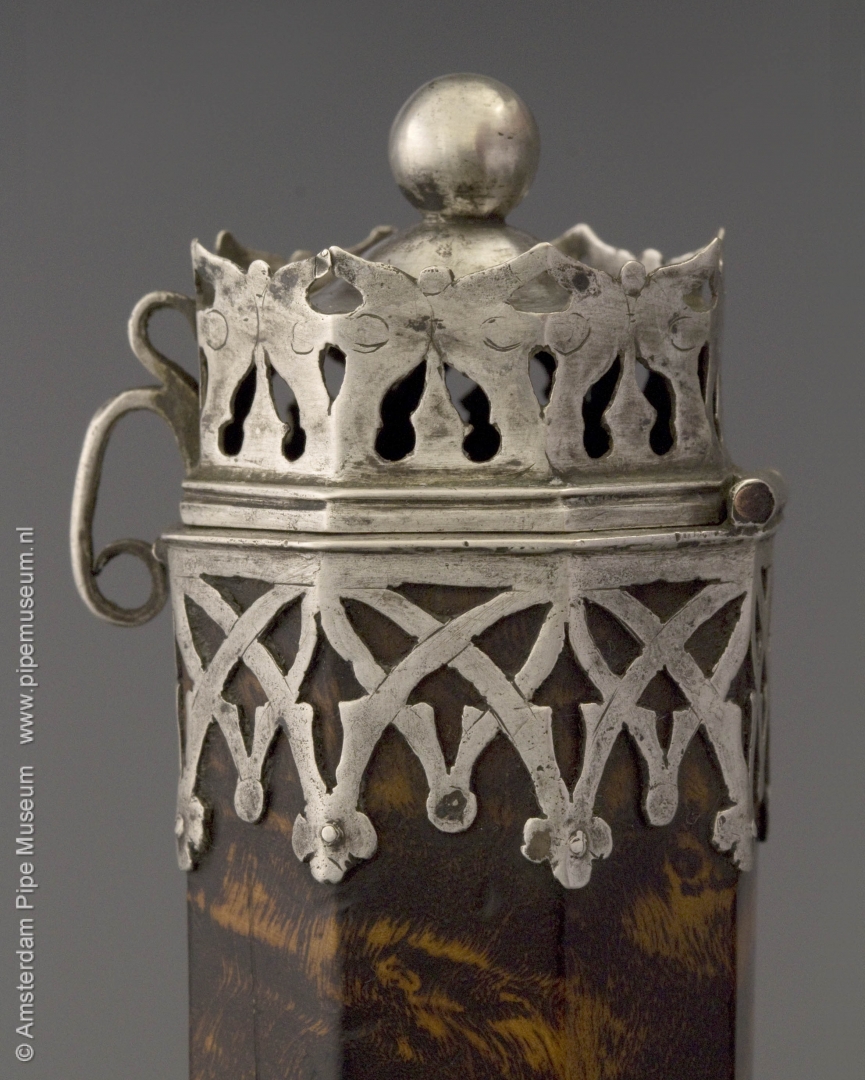Lids on all kind of pipes
To protect clothing against sparks, the pipe bowl has been covered with a simple cap since the seventeenth century. The lid of thin brass with a cut edge around and secured with a chain on the stem of the clay pipe is the oldest form. In some cases it is attached to the bowl rim with a hinge.
Fairly more common is the copper or iron wire braided spark-arrester or spark catcher. It was called prison work, because the braiding of pipe bonnets was typical work for prisoners. The dome shape is the most famous, in addition there is a high cap. The purely cylindrical bonnets, which are mainly intended for porcelain pipe bowls, date from the late nineteenth century. They are machined and the metal wire is even mechanically soldered. The more affluent smoker uses a silver spark-arrester with a fine safety chain on his long Gouda pipe, preferably in helmet shape.
We find the most beautiful lids by far on the elegant Central European pipes made in carved wood. Beautiful silver embossment or openwork domes are combined with the most imaginative clasps. Another option is a scene carved in wood to be mounted as a lid in a silver setting.
In the nineteenth century, the pipe cap became an industrial product. For example, the high lids perfectly fitting on Chemnitz pipes with their octagonal bowl. The perforations and the relief work were made with punching machines.
In the twentieth century, the briar pipe is provided with a lid only in exceptional cases. Then it is an addition in silver on the very luxurious pipe. Otherwise, cheap clamp lids with a spring are available that fit on practically any pipe. These lids are meant to smoke the pipe outdoors in the wind. The functionality of this lid is its only purpose, without any showy effect.





